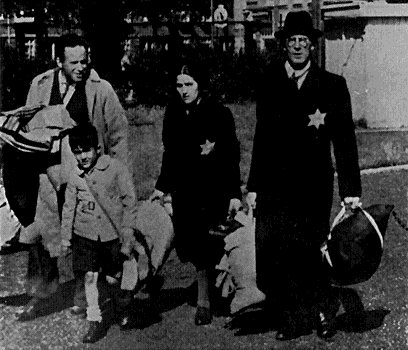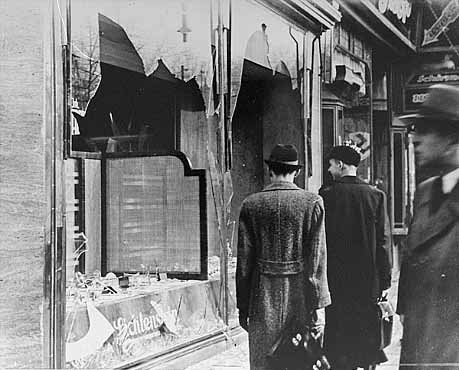|
|

Kristallnacht: Night of Terror
|
Share This Page
|
|
|
|
|
|
|
Follow This Site

|
 |
|
|
The distrust of and violence against Jewish people was perhaps nowhere more evident or devastating as in Nazi Germany.
In 1933, the German government announced a one-day boycott of Jew-owned businesses. Also, Jewish children found themselves the targets of restrictions at school.
Things got worse for Jewish people, as suspicion and determination grew. Two years later, Jews were stripped of their German citizenship. They could live in Germany, but they could no longer enjoy the benefits of being citizens. In 1936, German Jews were told that they could no longer vote. Two years later, they were told that they had to carry identification cards, so everyone would know what religion they practiced.
But it didn't stop there. It eventually ended in the deaths of more than 6 million Jewish people. It got progressively worse, and it started in earnest on a cold day in October.
By 1938, Germany had absorbed Austria and a region of Central Europe called the Sudetenland. Germany had built itself a massive army, navy, and air force and was making no secret of its ambitions to use those weapons. Back home, the situation for Jewish people in Germany was even worse than it had been before. Jews were viewed with suspicions and, in many cases, outright disgust. German non-Jews blamed the Jews for many things, including Germany's defeat in World War I and the economic collapse that followed. Actions against Jewish people grew increasingly intense.
 The intense violence began on October 28, 1938, when German police arrested 17,000 Jews originally from Poland and sent them back to Poland, without their belongings. Poland didn't want them, either, however, and so the people were put into a "relocation camp," along the border separating Poland and Germany. The intense violence began on October 28, 1938, when German police arrested 17,000 Jews originally from Poland and sent them back to Poland, without their belongings. Poland didn't want them, either, however, and so the people were put into a "relocation camp," along the border separating Poland and Germany.
One of the people sent away was Zindel Grynszpan, who was born in Poland and had moved to Hanover, Germany, in 1911. He owned a store, which was targeted by German police. Grynszpan and his family went into the relocation camp because they had no choice.
One member of the family who did have a choice was Herschel, a 17-year-old boy passionate about the changes he saw happening in Germany. He was living with an uncle, in France. When Herschel heard about how his family was treated, he got quite angry and decided to do something about it. He eventually got hold of a gun and walked toward the office of the German Ambassador to France. His aim: kill the Ambassador.
The Ambassador, however, was not there. Grynszpan was walking into the German Embassy, carrying a gun and having the intent to kill a man that he thought was his enemy. At that moment, frustration won out. He found someone else to shoot, Ernst vom Rath, the Third Secretary.
This was on November 7, 1938. Two days later, vom Rath died.
In response to this, the German Chief of Propaganda, Joseph Goebbels, announced the beginning of a program to punish Jews severely. On November 9, mobs stormed throughout Germany, Austria, and the Sudetenland, attacking Jewish people in public, in their homes, and where they worked. They even attacked the places of worships, the synagogues.
 The violence continued the next day. When it was done, nearly 100 Jews had been killed and hundreds had been hurt. More than 1,000 synagogues were burned. More than 7,000 Jew-owned businesses were destroyed. Most disturbingly, more than 30,000 Jews were arrested and sent to concentration camps. The violence continued the next day. When it was done, nearly 100 Jews had been killed and hundreds had been hurt. More than 1,000 synagogues were burned. More than 7,000 Jew-owned businesses were destroyed. Most disturbingly, more than 30,000 Jews were arrested and sent to concentration camps.
Because of the attacks on businesses and the number of broken store and house windows, the first night of the attacks has come to be called Kristallnacht, "the Night of Broken Glass."
The Holocaust had begun.
|
|